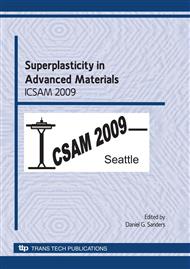p.169
p.179
p.185
p.197
p.211
p.219
p.225
p.235
p.241
New Developments in Superplastic Forming Simulation and Industrial Applications
Abstract:
In this paper, the authors presented the material models and numerical algorithms adopted in PAMSTAMP 2G for superplastic forming simulation. The improvements in strain rate control, automatic stop criteria, velocity scaling and shell element formulation to include normal stress can improve the accuracy and efficiency of superplastic forming simulation.
Info:
Periodical:
Pages:
211-217
Citation:
Online since:
March 2010
Authors:
Keywords:
Price:
Сopyright:
© 2010 Trans Tech Publications Ltd. All Rights Reserved
Share:
Citation:


